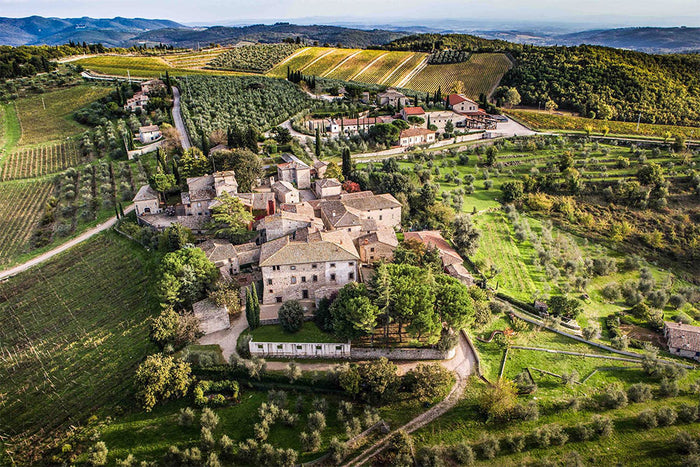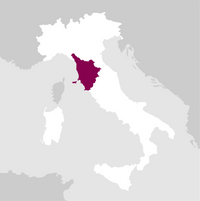描述
The white grape varieties traditionally cultivated in the Chianti Classico region, Trebbiano Toscano and Malvasia Lunga del Chianti, find their best oenological expression in Vinsanto. Still, the highly calcareous soil and the altitude of the slopes of Ama offer greater possibilities for producing great white wine. In 1982 and 1983, some plots were replanted with Chardonnay clones from Burgundy.
詳細資訊

香水

顏色

味道
服務於:
10 - 12 °C.
長壽:
05 - 10 years

搭配
- 創業年份: 1976
- 釀酒師: Marco Pallanti
- 生產的瓶子: 320.000
- 公頃: 75
To date, Castello di Ama owns and manages about 75 hectares of vineyards and 40 hectares of olive groves, relying on the work of more than 60 people. The role of general manager and oenologist is held continuously by Marco Pallanti, who served, between 2006 and 2012, as President of the Chianti Classico Consortium, bringing the contribution of the creation of the 'Gran Selezione' category with the aim of highlighting the extraordinary quality and diversity of the region's wines. 閱讀更多


| Name | Castello di Ama Al Poggio Chardonnay 2024 |
|---|---|
| Type | White still |
| Denomination | Toscana IGT |
| Vintage | 2024 |
| Size | 0,75 l |
| Alcohol content | 13.0% 按體積 |
| Grape varieties | 100% Chardonnay |
| Country | Italy |
| Region | Tuscany |
| Vendor | Castello di Ama |
| Origin | Village of Lecchi in Chianti, Town of Gaiole in Chianti (Siena) |
| Climate | Altitude: 460-501 m. a.s.l. Exposure: North-West and South-West. |
| Soil composition | Clayey and limestone. |
| Cultivation system | Lyre system and espalier. |
| Plants per hectare | 2,800 plants/hectare for the Lyre and 5,200 plants/hectare for the espalier. |
| Wine making | After soft-pressing the grapes, 60% of the must was refrigerated and fermented in steel tanks, while the rest was transferred to barriques. Of the grapes being fermented in wood, 25% were macerated on the skins for about 12 hours. |
| Aging | The Allier and Tronçais barriques used were half new and half a year old. The wine vinified in barriques underwent malolactic fermentation. Ageing in barrique lasted about 8 months on the lees, with regular bâtonnage every 7 days. |
| Allergens | Contains sulphites |




